Content
- 1 Is it possible to get the fungus through shoes
- 2 What to do with shoes if fungus is on the feet
- 3 How long does fungus live in shoes
- 4 How to properly treat shoes for fungus with folk remedies
- 4.1 How to treat shoes for nail fungus with vinegar
- 4.2 How to treat shoes for fungus with tea tree oil
- 4.3 How to freeze shoes from fungus
- 4.4 How to remove fungus from shoes with hydrogen peroxide
- 4.5 How to remove fungus from shoes with baking soda and activated carbon
- 4.6 How to disinfect shoes after fungus with potassium permanganate
- 4.7 How to disinfect shoes after nail fungus with alcohol
- 4.8 How to treat shoes for toenail fungus with chlorhexidine
- 5 Specialized footwear for nail fungus
- 6 How to use ultraviolet light for shoes from fungus
- 7 Conclusion
- 8 Reviews on the treatment of shoes from fungus
In shoe stores, there is a strict rule - you cannot try on bare feet. It is necessary to observe it for the sake of your own health, so as not to get infected with a foot fungus, also called mycosis. This disease is easy to get but difficult to cure completely. To protect yourself from his disputes, you need to carefully monitor your shoes and not wear someone else's without a sock. Treatment of shoes from fungus at home can be done both by professional and folk remedies.
Is it possible to get the fungus through shoes
Fungus is a common condition, especially among men over 40. This is due to the specifics of some professions - bath attendants, cooks, builders, factory workers. Mycosis develops in the absence of foot hygiene, even if this is a forced circumstance. High sweating of the feet is an aid for infection with fungal infections. The disease literally "blooms", because humidity promotes the reproduction of spores. It negatively affects the condition of the skin and nails, causes peeling and flaking. As a result, flakes of dead tissue are deposited literally everywhere - on the floor, furniture and shoes. The latter case is especially dangerous, because it adheres tightly to the skin, which leads to virtually inevitable infection.
Poor immunity also increases the likelihood of contracting mycosis. Therefore, the fungus is often a concomitant factor in a serious illness - diabetes, for example. In this case, getting rid of the infection is extremely difficult, because a weak body will struggle with labor. It is categorically impossible to put on someone else's shoes for people with weakened immunity. Damage to the skin in the form of scratches and burrs also increase the chances of infection.
In no case should you wear someone else's shoes in public places! This applies to gyms, showers, baths and even the beach. Sand is an excellent environment for fungus, so it is advisable to walk on it in your slates. Its spores can withstand extreme temperatures, so the scorching sun or frost does not diminish their danger. A simple principle will help to minimize the possibility of infection - not to wear someone else's shoes, at least without socks.
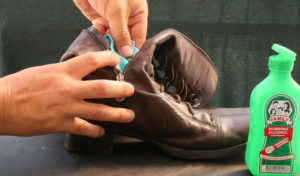
What to do with shoes if fungus is on the feet
If you have a fungal infection, you should not wear shoes without cotton socks, otherwise there is a high risk of infecting other people. In parallel with the beginning of treatment, it is necessary to treat shoes from fungus and odor, for which they use improvised or specialized means.If it has an insole made of synthetic materials, then disinfection is necessary, because such fabrics do not allow moisture to pass through. This applies to any water-repellent material - it must be removed indoors, otherwise the feet will sweat, and the increased temperature will cause an increase in the number of spores.
Before disinfection, you need to carry out a preparatory stage - wash and dry. Most products can burn the skin, and their smell can irritate the mucous membranes. Therefore, when working with them, you must wear rubber gloves and a medical mask. The product must be applied strictly in the specified concentrations so as not to spoil the material. A prerequisite is to place the treated shoes in a tight bag for 12-24 hours. Skipping this stage makes all processing meaningless - the product will fade away without starting to act.
How long does fungus live in shoes
The life span of fungal spores is about a year, during which they are sensitive to changes in temperature and humidity. In a dry and cold environment, they do not multiply, and when they get into favorable conditions, their active growth begins. The ideal place for them is high humidity and temperature, therefore it is not recommended to wear waterproof shoes for a long time in wet weather.
How to properly treat shoes for fungus with folk remedies
Despite the existence of a mass of chemicals, some people prefer to process shoes when treating nail fungus with improvised means. To "kill" the spores, an acidic environment is needed, so the procedure will be accompanied by an unpleasant, pungent odor. It is important to understand that after processing, the steam must be dried for several days, otherwise the result will not be successful. Before using any of the products, you need to make sure that the owner of the shoe is not allergic to it. And the person in charge of handling should wear gloves and a mask to avoid irritation of the skin or mucous membranes from fumes.
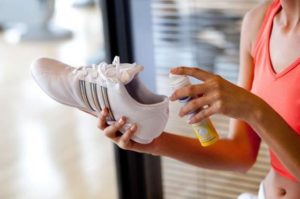
How to treat shoes for nail fungus with vinegar
The simplest way to treat shoes from fungus and odor is vinegar, apple cider or table vinegar. You cannot use the essence, only a 40% aqueous solution. After moistening cotton swabs in liquid, process the inner surface of the insole, then leave them there. Pack the shoes hermetically, leaving the moistened tampons inside - you need to keep it there for 2-3 days. After this time, open the bag and ventilate the shoes until the vinegar smell disappears completely.
The disadvantages of this method are the long processing time and strong residual odor. However, the plus in the form of cheapness and reliability often outweighs, which is why this method of treating the fungus is popular.
How to treat shoes for fungus with tea tree oil
Essential oils are often used as antiseptics for shoes against odor and fungus. This purpose is due to the unique chemical composition that contains tannins. Tea tree oil is excellent for preventing fungal spores and other diseases of the feet and nails. It is enough to moisten cotton pads with them and put them inside the shoes. It is doubtful to use a product for complete disinfection, because due to its consistency it will quickly be absorbed into the material. It also leaves yellowish stains after drying if a large amount of oil gets on a light-colored fabric.

How to freeze shoes from fungus
Mycosis spores feel great in hot and humid environments, therefore they actively reproduce in water-repellent boots and boots that are worn in winter. At the same time, it is believed that spores cannot tolerate extremely low temperatures, even with short-term exposure. This reasoning is due to the method of cold processing. It is recommended to leave boots in the cold for 24 hours, after which it becomes safe to wear them.At the same time, many treat this method with doubt, because disputes are very tenacious - freezing does not guarantee absolute reliability. It is more useful to combine this method with treatment with products, for example, putting shoes in the cold after drying. But you cannot take out wet steam, the material may deteriorate
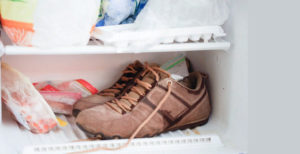
How to remove fungus from shoes with hydrogen peroxide
Hydrogen peroxide is an excellent antiseptic and can be bought at every pharmacy at a low price. A significant plus when processing with this tool is the absence of a strong smell, that is, it will take 1-2 days to weather it, no more. In order to remove mycosis with peroxide, you need to fill it with a 3% solution inside and remove the steam in a plastic bag for a day. After that, dry until the slightly sour smell disappears. When processing, you should not spare peroxide, you need to moisten the entire surface from the inside, including the insole.
How to remove fungus from shoes with baking soda and activated carbon
Baking soda and activated carbon are excellent antimicrobial treatments. The advantage of using them is the speed of the procedure and the absence of an acidic aroma. Crush the coal into powder and mix in half with soda, add 2 tbsp each. l. on each insole, distribute over the entire length. After 5-6 hours shake out the mixture, thoroughly clean the surface from residues. For this, it is best to use a dry cloth so as not to leave streaks. Dry for 12-15 hours. Such a powder for shoes against fungus is suitable in wet and hot weather, because there is no need for a long drying time.
How to disinfect shoes after fungus with potassium permanganate
An alternative to peroxide treatment is disinfection with a weak manganese solution. The use of this tool has a significant drawback - the inner surface will acquire a pink tint. If such a prospect is not scary, you can safely proceed to processing. Moisten cotton pads with an aqueous solution of weak concentration and wipe the insoles and shoes with them from the inside. Put the steam in a bag for 2-3 days, then dry it - disinfection is complete.
How to disinfect shoes after nail fungus with alcohol
Ammonia is an effective remedy in the fight against fungal spores; it is suitable when there is a shortage of time for disinfection. It is necessary to moisten a cloth abundantly in the product and wipe the inside of the shoes. Alcohol also perfectly eliminates unpleasant odors, for which, after processing, the steam must be dried in the fresh air. It dries quite quickly, but the smell lasts a long time - this must be taken into account when choosing a product.
How to treat shoes for toenail fungus with chlorhexidine
Chlorhexidine is great for disinfecting footwear from fungus, but only in a 1% solution. The difficulty lies precisely in this detail - only 0.5% concentration is sold in pharmacies, there is too little active substance. However, if the desired option was available, it should be used in the same way as alcohol - thoroughly wipe the shoes with the composition from the inside. When working with it, one must not forget about caution - this solution for treating shoes from fungus can irritate the mucous membrane.
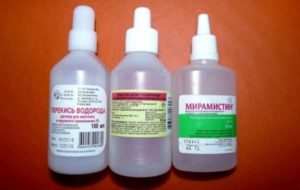
Specialized footwear for nail fungus
It is more convenient to use special means for treating shoes from nail fungus than traditional methods. In this case, disinfection takes much less time, and there is no unpleasant smell. You can even use drugs intended for the treatment of fungus! The fact is that the purpose of their use in both cases is the same - getting rid of disputes, so you can safely use such means.
Mikostop and Dezavid are effective targeted sprays against fungal diseases.To process shoes, they need to be sprayed generously inside, and then allowed to dry completely. The course of treatment is 3 to 5 days, during which shoes cannot be worn. To enhance the effect, you can put the sprayed steam in a plastic bag - this method is used in folk methods.
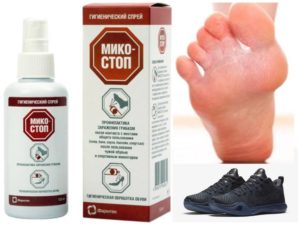
If you need to process shoes made of thin fabric, it is better to use the Desavid spray - it will keep even nubuck or suede intact. Another advantage is the absence of allergic reactions to Desavid, which is not excluded when using other means. The spray can not only be sprayed, but also applied with a cotton pad or cloth.
Spray Miramistin is suitable for daily use: it is enough to wipe the inside of the shoes with cotton wool soaked in a 0.1% solution, and it is better to process the insoles separately, like laces. The only drawback of this tool is the high price for daily use.
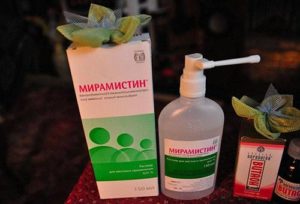
On vacation on tourist trains, there is a high risk of becoming the owner of athlete's foot when visiting the pool or the beach, therefore, disinfectants for shoes against fungus may be needed very urgently. The most affordable option is Bicin spray, which contains an ampoule with a solution and a bottle with a spray bottle (water is already poured in it). To use, you need to dilute the contents of the ampoule in water and shake to mix the composition. After that, spray it on the inside of the shoe, you can immediately put on a pair.
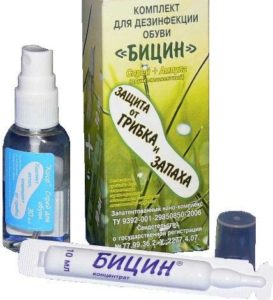
Treatment of shoes and socks from nail fungus can also be done with special wet wipes. They are called Asoptica and contain resorcinol - despite their strong effect, they are safe for the skin and nails. Wipe the affected surface with napkins - no other action is required. This method of disinfection is very convenient when going to the pool, to the beaches or to the gym.
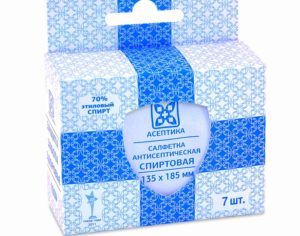
How to use ultraviolet light for shoes from fungus
Ultraviolet treatment of footwear from fungus is an effective alternative to chemicals; such disinfection leaves no chance for controversy. However, this method is more expensive, it is most practical to use when processing a large number of pairs. For this, there are Timson and Xenelite UV devices, which completely neutralize the treated surface from pathogenic strains, including mycosis.
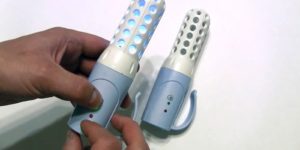
There are 3 main types of devices for treating fungus with ultraviolet light:
- Timson... The device operates on the mains, special inserts - dryers, are placed in shoes for 6-8 hours. They need to be placed closer to the sock, where the disputes are concentrated. After one session, the shoes will be disinfected.
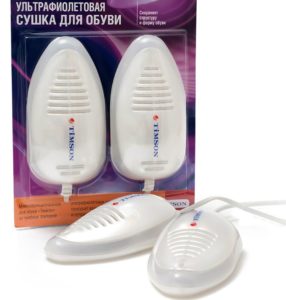
- Xenelight... The difference from the previous device in lightning-fast action - in just 5 minutes the manufacturer guarantees the complete destruction of microbes and fungi. For work, place the liners in the shoes along with the desiccants that come with the kit. The advantage of this device is that it works on batteries, it does not need to be connected to the mains.
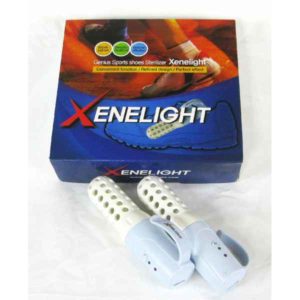
- Klenz... A professional device, its appearance resembles a miniature microwave oven. The principle of operation is based on exposure to ultraviolet radiation.
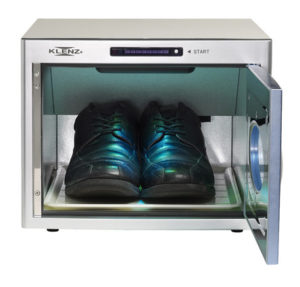
The use of devices for treating shoes from fungus has a lot of advantages - speed of action, 100% efficiency, and after the procedure, you do not need to dry. These qualities are justified by the high cost, especially if the infection has affected several family members. Also, this method is most optimal for disinfecting children's shoes or for sensitive skin. However, doctors recommend combining it with chemical methods of getting rid of the fungus.
Conclusion
Treating shoes from fungus at home is the first step to solving the problem of fungus on the feet and nails. There are many means for this on the market, including folk recipes. Their cost differentiation and efficiency are about the same, while the most reliable method is ultraviolet radiation.UV devices are more expensive than antifungal spray, but they are 100% effective.

